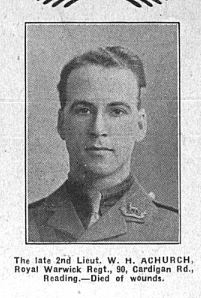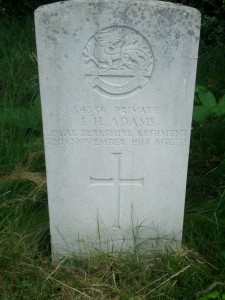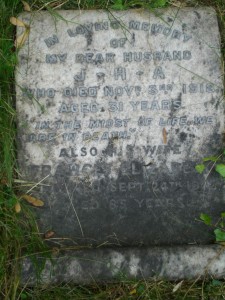George Abery
Driver 69183
35th Signal Company Royal Engineers
 |
George had seen twenty three months of active service when he died of wounds on November 29th 1917, he was nineteen years old. His unit was the 35th Signal Company of the Royal Engineers. This unit was raised in Reading and was held in high esteem by the town. George was the son of Mr and Mrs W. Abery of 54, De Beauvoir Road, Reading. He is buried in Dozinghem Military Cemetery, Westvleteren, Poperinge West-Vlaanderen Belgium. Grave XV. E. 12.
Poperinge was used by troops for rest and relaxation from the Ypres battle front. Casualties from the front would pass through the area on the way to trains and home to “Blighty”. Dozinghem was one of a trio of cemeteries, the other two being Bandagem and Mendingham, named by British troops to sound like local Flemish names, which served the casualty clearing stations and field hospitals around Proven which was the British Army rail centre. We do not know exactly the extent of the wounds George received but about the time he was injured one of the worst battles of the whole war was taking place at Passchendaele. For over three years, the Germans held the ridge, until, on November 6th 1917, the rubble which had once been the village was captured by the Canadian Corps. Many of his colleagues from the school were less lucky and had no known graves, instead they are commemorated on the walls of the Tyne Cot Memorial to the missing on Passchendaele ridge which is on the site of the largest Commonwealth Military cemetery any where in the world, Tyne Cot British Military Cemetery.


